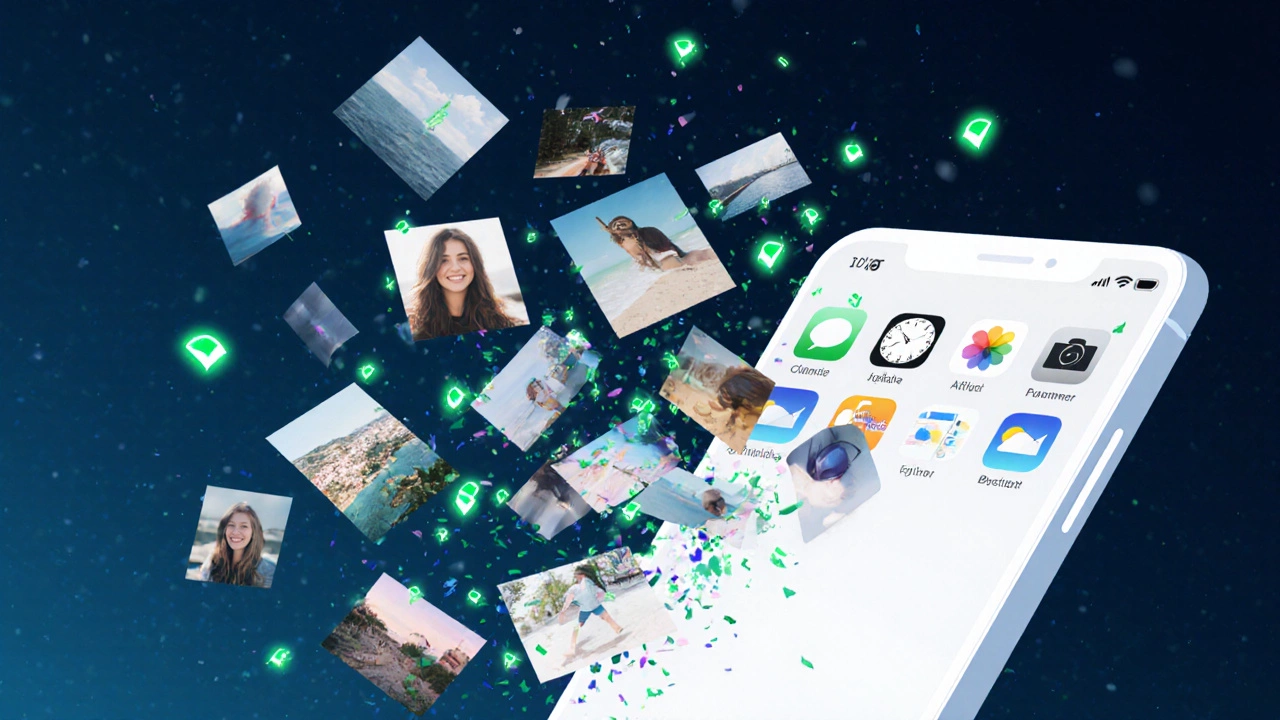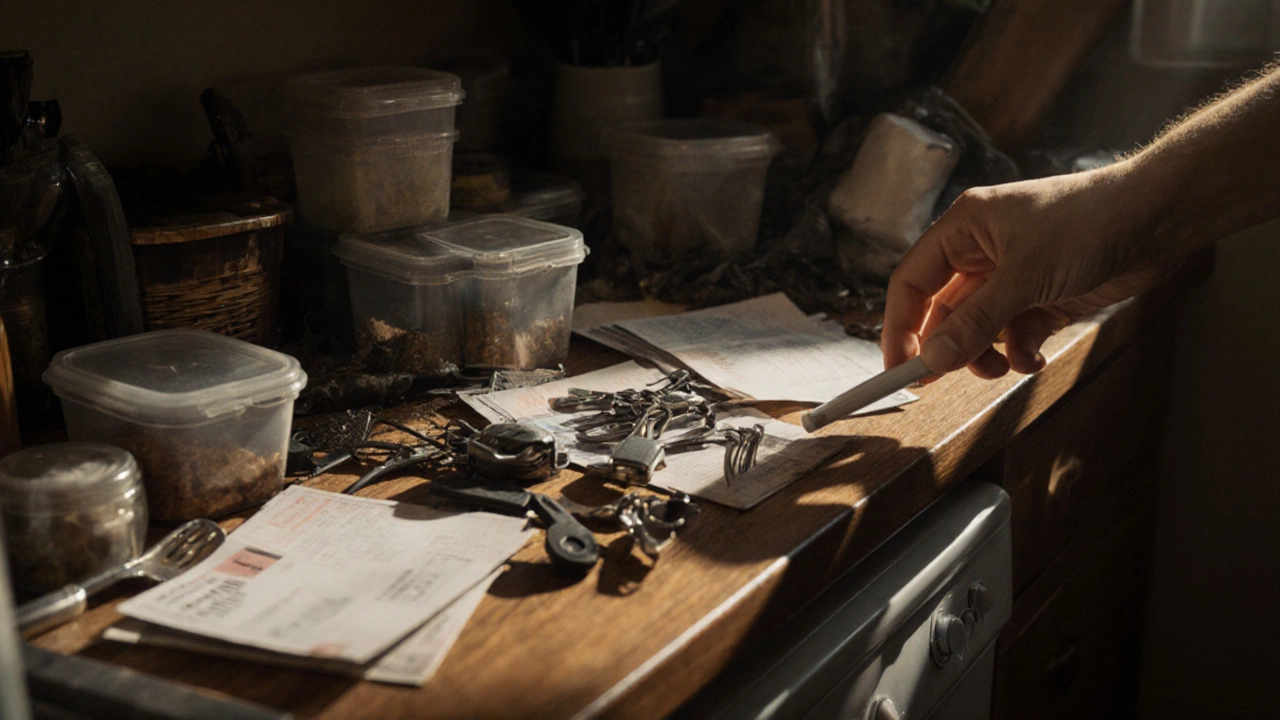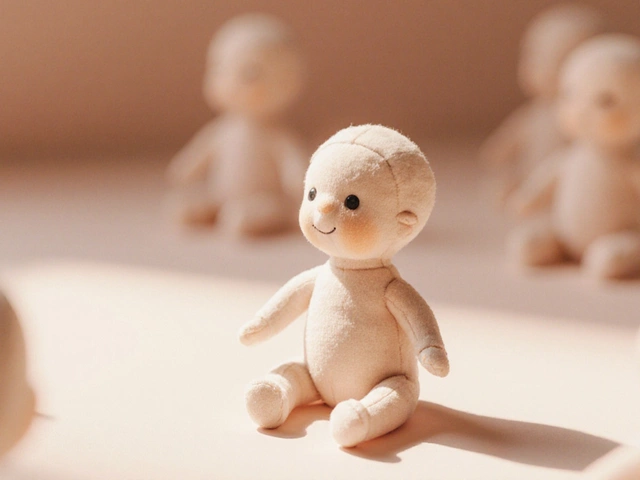You’re running out of space. Your closet is bursting, your phone is full, your garage looks like a junkyard, and your computer keeps warning you about low storage. You don’t need to buy more bins, shelves, or cloud plans. You just need to stop holding onto things that don’t serve you anymore.
Start with what’s right in front of you
Look around your home. The clutter isn’t hiding in some far corner-it’s piled on your kitchen counter, stuffed under your bed, or buried in that drawer you haven’t opened in years. Start there. Don’t try to tackle the whole house at once. Pick one spot: a drawer, a shelf, a single closet. Set a timer for 20 minutes. That’s all you need.When you open that drawer, ask yourself: Have I used this in the last year? If the answer is no, it’s not keeping you safe. It’s just taking up space. Clothes you haven’t worn since 2021? Donate them. Old chargers with no matching device? Toss them. That set of plates you got as a wedding gift but never use? Give them to a friend or drop them at a thrift store.
People think they’re saving things for "someday." But "someday" never comes. And every item you keep costs you something: space, time, mental energy. Letting go isn’t losing-it’s making room for what actually matters.
Clear out your digital clutter
Your phone and computer are just as crowded as your closet. Photos alone eat up gigabytes. How many blurry selfies, screenshots of text messages, or duplicate vacation pics are still sitting there?Open your photo library. Sort by date. Go back three years. Scroll through. Delete anything that’s out of focus, duplicated, or just plain boring. You don’t need 47 photos of your coffee cup from last Tuesday. Keep the ones that spark joy-or at least, the ones you’d actually show someone.
Use your phone’s built-in tools. On iOS, go to Settings > General > iPhone Storage. On Android, go to Settings > Storage > Files. Both will show you what’s taking up the most space. You’ll likely find huge video files, old downloads, or cached app data you didn’t even know existed. Clear it.
Uninstall apps you haven’t opened in months. That fitness app you downloaded in January? The puzzle game you played once? The shopping app you deleted and reinstalled five times? Get rid of them. They’re not helping. They’re just sitting there, silently using up memory.
Organize what you keep
Freeing up space isn’t just about throwing things away. It’s about organizing what stays. A messy drawer isn’t just ugly-it’s a time sink. You waste minutes every day digging for socks, tools, or chargers.Use what you already have. Shoeboxes become drawer dividers. Mason jars hold screws, brushes, or makeup. Towels rolled and stacked under the bed create hidden storage. You don’t need fancy bins. You need intention.
Label things. Not with fancy stickers, but with a marker and a strip of tape. Write "Winter Sweaters," "Tax Docs," "Kids’ Artwork." Seeing the label means you won’t open 10 boxes looking for one thing. It cuts down on the mental load.
Store things vertically. Use wall hooks for bags, hats, and tools. Install shelves above doors. Hang pots in the kitchen. Every inch of vertical space is free real estate.

Stop the cycle of accumulation
You cleared the space. Now don’t fill it back up. The biggest mistake people make after decluttering is buying more stuff to "fix" the emptiness. That’s not storage-it’s avoidance.Adopt the one-in, one-out rule. Every time you bring home a new shirt, give away an old one. Buy a new kitchen gadget? Toss the broken one from 2018. It’s not about being perfect. It’s about balance.
Before you buy anything, wait 48 hours. Ask yourself: Do I need this? Or do I just want to feel better right now? Most of the time, the urge passes. And if it doesn’t? Then maybe you really do need it.
Use free digital tools to back up and reduce
Cloud storage isn’t magic, but it’s free for a reason. Google Photos gives you 15GB free. iCloud gives you 5GB. Dropbox has 2GB. Use them. Upload your photos, your important documents, your old work files. Then delete them from your device.Convert files to smaller formats. Save PDFs as compressed versions. Turn video files into lower-resolution MP4s if you don’t need 4K. Use free tools like HandBrake (for video) or Smallpdf (for documents) to shrink files without losing quality.
Unsubscribe from email lists you don’t read. Each email, especially those with images and attachments, adds up. Use Unroll.Me or just manually unsubscribe. Your inbox will thank you-and so will your storage.

What to do with what you remove
Don’t just toss things in the trash. There are better ways.Donate clothes, books, and toys to local charities. In Wellington, places like Salvation Army, St. Vincent de Paul, and local community centers take gently used items. They’ll sort, clean, and give them to people who need them.
Sell what’s valuable. Facebook Marketplace, Trade Me, or local garage sales are easy ways to turn clutter into cash. Even if you only make $20, it’s better than letting it rot in a box.
Recycle properly. Electronics, batteries, and plastic containers shouldn’t go in the regular bin. Check your city’s recycling guide. Wellington has free drop-off points for e-waste and hazardous materials.
Compost food scraps and garden waste. That’s not storage, but it’s space-saving too. Your bin won’t stink, and your garden will thrive.
Real results, real time
One person in Wellington cleared out her garage over two weekends. She didn’t hire movers. She didn’t buy a single storage bin. She just started with one shelf. By the end, she had donated 12 bags of clothes, sold 8 items online, and freed up enough space to park her car inside again.Another person deleted 12,000 photos from their phone. They went from "storage full" to "14GB free" in one afternoon. They didn’t upgrade their phone. They just stopped holding onto everything.
You don’t need more space. You need less stuff.
What’s next?
Pick one spot today. Just one. Open the drawer. Look inside. Ask: Do I need this? If not, put it in a box labeled "Give Away." Don’t decide where it goes yet. Just get it out of your space.Tomorrow, do the same with your phone. Delete 50 photos. Uninstall two apps. Clear your downloads folder.
In a week, you’ll look around and realize something: your home feels lighter. You breathe easier. You find things faster. And you didn’t spend a cent.
How do I know what to keep and what to throw away?
Ask yourself: Have I used this in the last 12 months? Does it serve a purpose now-or bring me joy? If the answer is no to both, let it go. If you’re unsure, put it in a box and label it "Try Again in 6 Months." If you haven’t opened it by then, donate it.
Can I really free up space without buying storage bins?
Yes. Most storage bins are just containers for clutter. Instead, use what you already have: shoeboxes, jars, baskets, or even folded towels. Vertical space, like wall hooks and shelves above doors, is free and often overlooked. The real fix isn’t more containers-it’s less stuff.
What’s the fastest way to clear phone storage?
Start with photos and videos-they take up the most space. Delete duplicates, blurry shots, and screenshots you don’t need. Then clear your downloads folder and uninstall apps you haven’t opened in 90 days. On iOS, go to Settings > General > iPhone Storage. On Android, check Settings > Storage > Files. Both show you what’s hogging space.
Is cloud storage safe for important documents?
Yes, if you use trusted services like Google Drive, iCloud, or Dropbox. They encrypt your files and back them up across multiple servers. For extra safety, keep a second copy on an external hard drive stored in a different location, like a friend’s house or a safety deposit box.
What if I feel guilty about getting rid of gifts?
The gift was the thought, not the object. Holding onto something you never use doesn’t honor the person who gave it-it just weighs you down. If you feel guilty, thank the item for its time, then pass it on to someone who will use it. That’s how you honor the intention behind the gift.
How often should I do a storage cleanup?
Do a quick 15-minute check every month-just scan one drawer or shelf. Do a full home review twice a year: once in spring, once before the holidays. That’s enough to keep clutter from creeping back in without feeling overwhelming.







